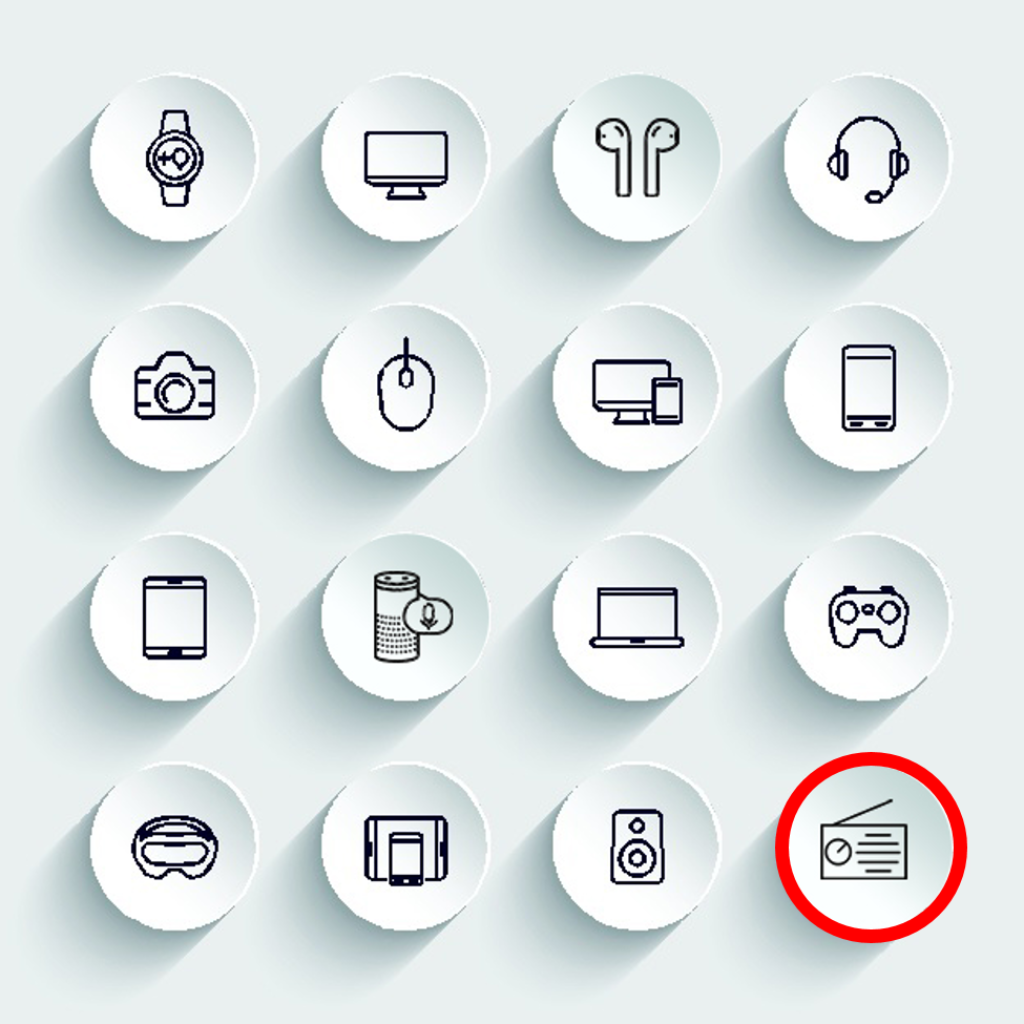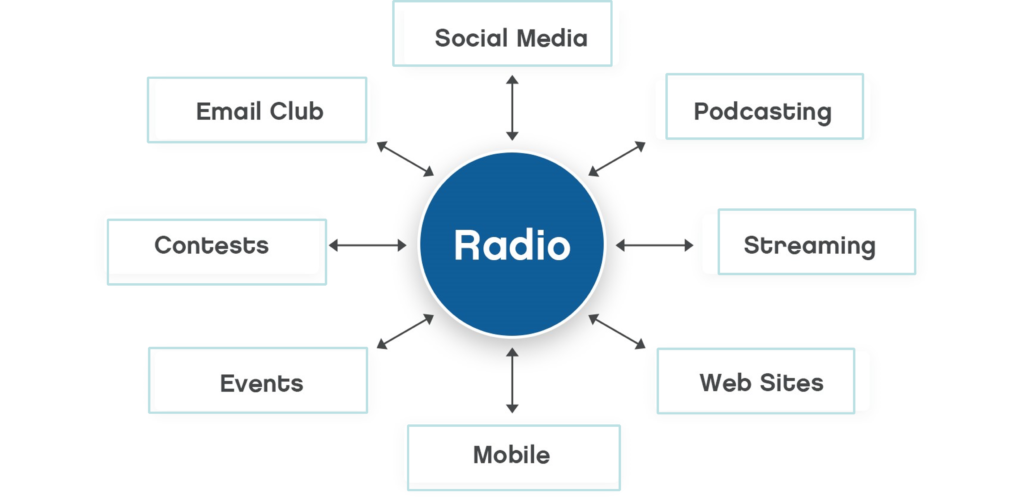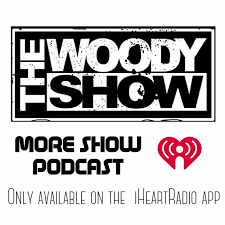
COVID accelerates trends. That’s a fact. As we learned in January during our virtual CES tour, the pandemic turbocharged movements already well underway.
From tele-medicine to e-commerce to video streaming, most Americans increased their activities, bolstered by the disruptive force of spending more time at home and less time in cars.
The McKinsey data quoted below was published 16 months ago when COVID was just building up steam. You can only imagine how these tech adoption trends have soared in the months since.
In this context, the pandemic functioned as an accelerant. And it forced even the stodgiest, techphobic among us to learn how to use Facetime, log into Zoom meetings, scroll through Netflix and Amazon prime shows, and buy stuff on Amazon.com.

The broadcast radio industry learned this lesson – in many cases – the hard way. The “digital deniers” all but disappeared in 2020, as they watched radio listening levels crater during COVID. Of course, the “culprit” in many cases, is the ongoing disappearance of radios in people’s home. Our Techsurveys are conducted among core radio listeners – the 20% in “The 80:20 Rule.”
And of them, only eight in ten have a functioning radio at home that they use. That doesn’t account for all those clock radios tethered to nightstands, radios on a workshop shelf, or radios that simply are inconveniently located in people’s homes, condos, and apartments.
As we learned from our unique perch of interacting with companies throughout the U.S. radio spectrum – including commercial, public, and Christian music stations – streaming took off in 2020. And I’m not just talking about streaming Tiger King on Netflix during the early days of the pandemic.
Audio streaming for many broadcast radio stations took flight last year, thanks to well-architected multi-platform distribution outlets like laptops, smartphones, tablets, smart speakers, and other sources. Stations and companies that invested in these tools had a decided age during the pandemic. And if they effectively marketed their multi-platform accessibility, better yet.
For radio broadcasters, it feels more and more like we’re in a special moment in time. The ways in which listeners are accessing our content are changing. More and more, we’re seeing radio companies acting like multi-media entertainment brands.
Below is the way most radio companies have visualized the digital opportunity:

Radio – the core product and the way most still listen – is the center of the universe. And the boxes that surround are all the different places where content goes – computer streaming, mobile, websites, podcasts – those new distribution outlets we’ve been talking about.
But increasingly, companies – especially the biggest ones – are reassessing their content, distribution, and marketing priorities. More and more, the new model looks something like this:

Here we have content at the center of the media universe. Surrounding it are the various ways to consume it. Note that “radio” is now one of those reception options. But it is no longer the huge core distribution outlet. And while I used a bigger font for radio, note that other options are all lined up as the many ways in which to enjoy and consume that content.
Podcasts, mobile, streams, newsletters, mobile, events – they join radio as the many different platforms a company can use to disseminate that content.
The biggest companies in the industries are using a version of this model where content is at the core – not radio. When listening to an Audacy station, you’ll hear a steady diet of promos for the company’s podcasts, as well as their streaming genre stations. It is common to hear promos for say, “the 80s” station,” on one of the company’s terrestrial stations.
for the company’s podcasts, as well as their streaming genre stations. It is common to hear promos for say, “the 80s” station,” on one of the company’s terrestrial stations.
The company now offers scores of streaming stations – organized by decades, genres, moods – and they’re promoting them on their over the air stations.
And a look at the Audacy website reveals lots of different options on the nav bar. But the word “radio” appears nowhere “above the fold.”

What about iHeartMedia?
Believe it or not, the iHeartRadio app has been around for 13 years, shortly after Apple opened its famous App Store. iHeart has been aggressive on many fronts – mobile, automotive, podcasts, streaming stations, and of course, events and awards shows.
A look at their website reveals that “audio” is the center of its universe. Looking at the “listening platforms” near the bottom, you see “radio” is one of several different choices. It’s a horizontal version of my “content” sphere. “Radio” (I circled it) co-exists with podcasts, events, digital, and other options.

This has the look and feel of a true multi-media company.
But it doesn’t stop there. Our consultant, Mike Stern, received this email from iHeartRadio last week, after streaming ALT 98.7 in Los Angeles, with this subject line:
![]()
And this is the email copy that followed, using data to connect Mike up with other iHeartRadio content alternative fans are consuming:

Now you can look at a strategy like this one in a lot of different ways.
On the one hand, iHeart is inviting its ALT 98.7 listeners (albeit via the stream) to listen to content produced by the company’s content factory. The theory is that listeners to the station will no doubt go to many different sources to stream programming they enjoy – why not keep them under the iHeart roof?
And the company is aggressively promoting its digital assets. Last week, who was the biggest advertiser in all of broadcast radio? Not Progressive, not Home Depot, not Indeed – it was iHeartRadio.
All Access reported that according to Media Monitors, for the week of August 16-22, nearly 56,000 promos ran for the types of digital iHeartRadio programming you see in the above email. That’s a lot of promotional firepower. If each of those promos (or “instances” as they’re referred to) is valued at $100 a pop, that represents a one week schedule worth $5,600,000.
programming you see in the above email. That’s a lot of promotional firepower. If each of those promos (or “instances” as they’re referred to) is valued at $100 a pop, that represents a one week schedule worth $5,600,000.
You’d have to call that leaning in to marketing the company’s digital content. And that pot of promos does not include emails like the one above and other marketing efforts in other media, leveraging iHeart properties.
At Podcast Movement earlier this month, iHeartRadio’s podcasting chieftain, Conal Byrne, made the case for cross-promotion, citing its lift for the company’s podcast portfolio:
“I’ve been surprised at the power of broadcast radio to market to podcast listeners, and a lot of them are new podcast listeners. When you can level 150 GRP at a new podcast for multiple weeks in a row, that’s a multimillion dollar marketing campaign that would have otherwise had to try to get there through word of mouth. In the past three years I have seen that make a big difference for us.”
Bob Pittman’s not surprised. Like other CEOs that come out of radio, he knows the power of radio’s collective megaphone, and its ability to move bodies – that is, ears – from one content source to another.
bodies – that is, ears – from one content source to another.
An important component in this digital strategic cross-promotion activity is making sure companies have their “analog strategies” defined and effectively communicated – that is, its people.
Those who actually work for ALT 98.7 need to understand the rationale behind this marketing game plan. And as was discussed at Boot Camp, making sure staffers have some skin in the game in the form of compensation and bonuses when digital success is achieved.
 Just as iHeart promoted the Dr. Death podcast, it could also be directing streamers to The Woody Show podcast – the one produced by the station’s high-profile morning show.
Just as iHeart promoted the Dr. Death podcast, it could also be directing streamers to The Woody Show podcast – the one produced by the station’s high-profile morning show.
The ability to move consumers from one content pod to another is the foundation of iHeart and Audacy’s strategies.
How they are designed and executed in part of that determination that every company’s “mileage may vary.” That is, depending on the maturity and quality of digital assets, the strength of existing radio brands to market it, and the data that drives these connections, not every player will walk away with the same number of chips.
Smaller companies (as proved by Townsquare – a blog topic for another day) have to forget their own digital content and marketing strategies, leveraging their assets and assessing the most effective ways of moving the digital ball down the field.
It’s fascinating to think that just a couple of decades ago, every radio company functioned in much the same way: creating content at the station (or network levels), and using ratings to determine the value of on-air advertising.
Today, there are myriad ways to go, thanks in no small part to the rainbow of opportunities radio broadcasters have on the digital smörgåsbord. Making the optimal choices about the types of content to create and market go to the heart of the challenge facing the radio medium in its second century.
It’s the way in which several of us at Jacobs Media (and jacapps) are spending time and energy these days.
Not every radio company will emerge victorious in this 21st century test of the medium’s efficacy in a rapidly increasing digital world. It won’t be so simple to look over at “the other guys” and ask why we’re not doing as well as they are. Success will assuredly rest on making the right calls at the right times for the right companies. It will require actionable research, steady guidance, and big dollops of realism.

Radio broadcasters now find themselves on the “on ramp.” There are many points of interest along the way. Knowing the right ones is key.
That’s because on the digital superhighway, your mileage will most certainly vary.
But what an exciting road trip it will be.
- 5 Lessons For Radio From The Apple Watch - May 5, 2025
- DJs And Baristas: Can They Save Their Companies? - May 2, 2025
- Radio’s New Audience Equation: Z Over Y = Trouble - May 1, 2025




Effective Radio Content Drives Digital and All Receivers. Thank you, Fred!
Interestingly enough, I was recently listening to Classical KUSC (Los Angeles) on iHeart Media, and later received the very same “Love Alt 98.7?” email. So they may not be quite as targeted as they seem!
Love the post, Fred – so much good food for thought.
So much for great targeting, eh? Thanks for sharing the experience, John, and for the kind words.
Fred,
Thanks for spotlighting this evolution from radio being the mothership to just another distribution platform. Your mileage will vary comment reminded me of the airline business, which has done a commendable job diversifying its revenue stream over the last 10 years. Delta alone now makes $6 billion a year (with a b) selling frequent flyer miles to companies like American Express.
In fact, passenger tickets now represent only 2/3’s of their revenue, yet airlines aren’t sprinting away from their legacy business.
Back to radio. It’s an interesting turn of events that SiriusXM launches “TikTok Radio” while some broadcast companies don’t have the conviction to put the word above the fold anymore.
Just for the fun of it, I googled “radios”. You can buy a Bluetooth enabled clock radio with a USB charging port for less than $35. If people don’t have or use radios, its not because they aren’t easy to find or expensive, its because they don’t want them. Making Zoolander 2 or Ishtar available on streaming platforms that can be enabled with an Alexa command won’t make them great movies or generate interest in seeing them.
iHeart radio, in all of its aggregated, consolidated glory, reaches only a fraction of what any of the streaming music services do. I expect to be piled onto here, but radio should be focused on content, not distribution. If people liked radio more, they’d dust of those old ones or fork over $35 for that one that also has Bluetooth and a charging port.
Bob, content is in the center of my new media chart for a reason. If your streaming stations suck, your podcasts are lame, and you’re running empty radio stations, Alexa and mobile apps can’t save you.